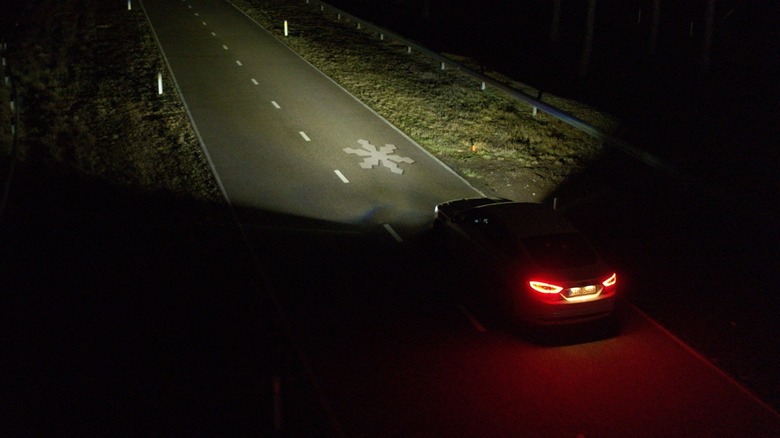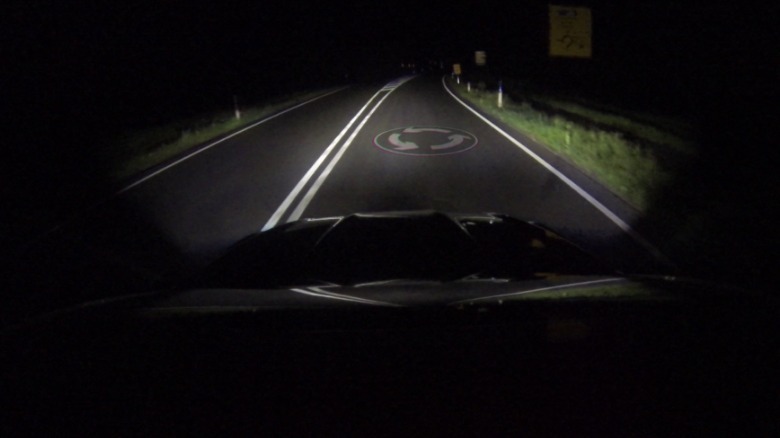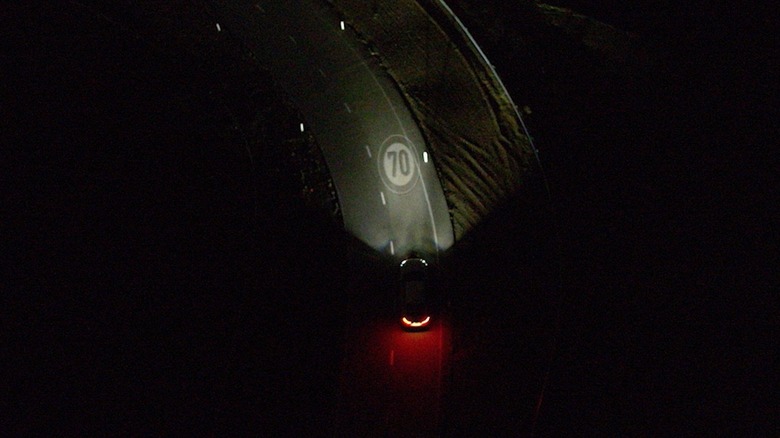Ford's High-Tech Headlights Are Augmented Reality Everyone Can See
Ford is working on a new headlight tech that takes inspiration from Augmented Reality apps to project useful information on the road, especially in the dark, the company announced. Think of it as sort of like the Bat-signal, but instead of projecting a giant bat in the Gotham night sky, your Ford car's headlight casts direction cues and speed limits on the road ahead. Ford is calling it High-Resolution Headlights and its engineers are currently trialing the technology that could make driving at night significantly safer.
The idea is that instead of making the driver take a peek at the digital console and lose sight of what lies ahead, they will always have their line of sight fixed on the road and still be able to see critical information. If you've used the AR direction cues in the Google Maps app that show virtual arrows and landmark labels, Ford's technology aims to do just that — only using the car's headlights.
Right now, Ford's headlight tech can project direction information, weather details, and speed limit. However, there is also the possibility of optically throwing out a crosswalk for pedestrians and width lines to assess if the car can fit in a parking spot. Ford says its engineers can also tune the headlights to show information about the road conditions ahead, which can be especially useful for drivers on a nighttime journey.
Making night drives safer
Ford won't say when its headlight tech will make its way to commercially available cars, and hasn't delved deep into the technical aspects, either. But the short demonstration video shared by the company suggests that the headlight light projection tech is ready and can be tweaked as needed to make it more versatile. As mentioned above, the company's focus is on making night driving more comfortable, for both the driver as well as cars and pedestrians in the vicinity.
For example, it could be a godsend for routes where the markings have faded from the asphalt, or navigation boards are missing from the roadside. Plus, the safety aspect is a key consideration. Driving at a modestly high speed at night and taking a peek at the digital console can create a driving blind that can prove to be quite costly. Information projected on the road will minimize the safety risks of taking one's eyes of the wheel, including providing proximity guidance and projecting guidelines for straight lane cruising.
Mercedes, on the other hand, is inclined towards an Augmented Reality Heads-Up Display (AR-HUD) tech for cars. In this iteration, the pricey S-Class cars from Mercedes will serve directional cues right on the windshield, which acts like a huge see-through display. Interestingly, Ford's latest test appears to have been inspired by Mercedes' Digital Light headlamp tech from 2018 that crammed the equivalent of one million pixels in each headlamp to project information on the road ahead.


